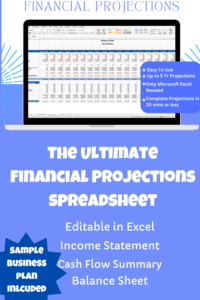When creating a business plan, one of the most critical sections to master is the business description. This section serves as the foundation upon which the rest of your plan is built. In this article, we’ll delve into the key components of a business description and explore why each element is crucial for effectively communicating your business vision and strategy.
When it comes to crafting a business plan, one must recognize that not all plans are created equal. Just as businesses come in diverse shapes and sizes, their business plans should be equally unique and adaptable to their individual needs. At the heart of this crucial document lies the business description, a section that forms the bedrock upon which the rest of the plan rests. However, it’s important to note that not all business plans will encompass every component listed within these pages. Instead, a well-crafted business description should be customized, focusing on the aspects that are most pertinent to your specific venture. It’s a blueprint for your business’s future, one that should be as unique as your entrepreneurial vision.
Table of Contents
Key Components of a Business Description
1. Company Overview
Every great business description starts with a concise company overview. This is where you introduce your business, including its name, location, and founders. For instance, consider a fictional company called “TechSavvy Solutions.” In this section, you would introduce TechSavvy Solutions as a technology consulting firm based in Silicon Valley, founded by tech enthusiasts John Smith and Jane Doe.
2. Mission and Vision
Next, it’s essential to articulate your business’s mission and vision. This helps define the purpose and long-term goals of your company. Returning to our example, TechSavvy Solutions might state its mission as “To empower businesses with innovative technology solutions,” and its vision as “Becoming a global leader in digital transformation services.”
3. Business Structure
Understanding your business’s legal structure is important. It can be a sole proprietorship, LLC, corporation, or other forms. This detail is essential for legal and tax purposes. TechSavvy Solutions, for instance, might be registered as an LLC.
4. History and Background
A brief history of your company can provide context. Mention significant milestones, such as the founding date and key achievements. For TechSavvy Solutions, this section could highlight its establishment in 2010 and mention any awards or major clients it has acquired over the years.
5. Product or Service Offering
Clearly define what your business offers. Explain the products or services you provide and what makes them unique. In TechSavvy Solutions’ case, they may detail their consulting services in areas like cloud computing, cybersecurity, and digital marketing.
6. Market Opportunity
Addressing the market opportunity is crucial. Explain the problem or need your business aims to solve and the size of your target market. For example, TechSavvy Solutions might highlight the growing demand for tech solutions in an increasingly digital world.
7. Market Research
Back up your claims with market research findings. This could include customer demographics, market trends, and competitor analysis. If TechSavvy Solutions found that 75% of businesses in their region lack comprehensive cybersecurity measures, this data would be relevant here.
8. Competitive Analysis
Discuss your competitors and your strategy for standing out. TechSavvy Solutions might point out its competition among other consulting firms, highlighting its deep industry expertise and track record.
9. Sales and Marketing Strategy
Explain how you plan to reach your target audience and convert leads into customers. TechSavvy Solutions may detail its digital marketing campaigns, industry partnerships, and lead generation tactics.
10. Team and Management
Introduce the key members of your team, their roles, and relevant experience. For instance, TechSavvy Solutions might showcase John Smith’s 15 years of experience in IT consulting and Jane Doe’s expertise in project management.
11. Operational Plan
Describe the day-to-day operations of your business, including location, facilities, and supplier relationships. If TechSavvy Solutions has offices in Silicon Valley and strategic partnerships with tech vendors, this information would fit here.
12. Financial Projections
Provide financial forecasts to demonstrate your business’s viability. This includes income statements, cash flow projections, and a balance sheet. TechSavvy Solutions may present a 5-year financial projection illustrating its revenue growth.
13. Funding Requirements
Specify how much funding you need, its purpose, and the expected return on investment. If TechSavvy Solutions is seeking $500,000 to expand its cybersecurity services, they would outline how these funds would be used and the anticipated ROI.
14. Milestones and Goals
Finally, outline both short-term and long-term goals for your business. TechSavvy Solutions might set goals like acquiring 20 new clients within the first year and achieving a 30% growth rate over the next five years.
Conclusion
In conclusion, a well-crafted business description is the cornerstone of any successful business plan. Each component serves a unique purpose, from introducing your company to demonstrating its financial viability and growth potential. By meticulously addressing these elements and weaving in real-world examples, you can create a compelling and informative business description that captures the essence of your entrepreneurial vision. Remember, a strong business description not only guides your planning process but also serves as a powerful tool for attracting investors and partners who share your passion and vision.






